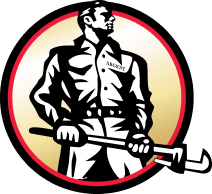NJ Furnace Installation and Repair
Nationwide, nearly all homes are heated with furnaces or boilers. A home’s furnace is responsible for heating and distributing air throughout the home using ducts. As the temperatures drop and winter settles in, the efficiency of a home’s furnace becomes critical to a family’s comfort and safety. Depending on the age of a home furnace or boiler, the level of heating efficiency varies. A home furnace’s efficiency is measured by how efficiently the appliance is converting its fuel’s energy to heat over the course of the year. This measurement is called the Annual Fuel Utilization Efficiency (AFUE) rating and the Federal Trade Commission now requires that all new appliances display this rating. An HVAC expert will walk homeowners through the various furnace options available and advise on ideal energy efficiency levels based on the heating needs of the residence.
Choosing The Right Furnace
Choosing the ideal furnace for a home depends on a number of factors. The three most important deciding factors are size, budget and energy efficiency ratings. In order to determine the proper size of a home’s heating system, an installation specialist will visit the home and conduct a heat load calculation. This heat load calculation measures the square footage of a home, evaluates a home’s current insulation and weather proofing equipment and assesses a home’s ventilation ductwork. Based on the results of this heat load calculation, an installation specialist will consult with a homeowner about their budget. Based on the budget provided for the specialist, the homeowner will be matched with the highest energy efficiency rating within their budget. From there, it is a matter of personal preference.
The Furnace Installation Process
Barring exceptionally challenging home heating systems, most furnace installations can be completed within a day. Below is a brief overview of the furnace installation process.
- Choosing A Furnace: The homeowner and the home heating specialist work together to find the right furnace for the home’s heating needs, size and budget restrictions.
- Removing Existing Parts and Systems: A home heating technician will remove any existing heating systems.
- Installation of New Furnace: The technician will install the new furnace. Before leaving, the technician will ensure that there is adequate clearance from combustibles, the filters are correct and all air ducts are sealed to prevent leakage.
Diagnosing A Needed Furnace Repair
As a home’s heating system ages, parts begin to deteriorate and often need repairs. There are a number of indications that a heating system is malfunctioning and needs to be repaired or replaced. Listen for abnormal sounds coming from the furnace. These can include grinding, squeaking, popping or banging. These sounds would indicate a furnace malfunction. Additionally, if the thermometer is showing a reading of three degrees higher or lower than the desired temperature, something may be malfunctioning within the system, and a repair is likely needed.
Common Furnace Problems and Repairs
When it comes to furnace repair, there are six common problems and repairs. A furnace repair technician can diagnose these problems and repair the issue within the same day. Homeowners experiencing any of these problems should review the next section to decide whether to repair or replace the system before calling a heating repair technician. Here are the most common heating system problems.
- Dirty filters producing clogs that prevent air flow.
- Wear and tear that causes airflow or overheating problems.
- Electric ignition or pilot control problems.
- Thermostat malfunctions.
- Frequent cycling between “on” and “off” settings.
- A continuously running blower.
Repair or Replace: How To Decide
Once a malfunctioning heating system has been diagnosed, a homeowner must decide whether to replace the system or repair the parts. As a general rule, replacing a heating system is recommended if a home’s system is over thirteen years old or requires a repair that will cost over $500.00. Other factors to consider include:
- The system’s age and condition.
- The estimated cost of the needed repair.
- Any related safety issues.
- Whether the home is expected to be a long-term residence for the homeowner.
- Whether the home’s air conditioning system needs replacement as well.
Troubleshooting Common Furnace Problems
Before calling a repair technician, check for these common problems. Ensure that your thermostat is set at an appropriate temperature. Be sure the heating system is set to “heat mode” and the fan is set to “manual” or “auto” mode. Check the filter and change if needed. Check the furnace breaker in the main electric service panel. Be sure it is switched to “on.” Check for obstructions in PVC intake or exhaust pipes. Check that the furnace front panel is securely fastened, and the fan safety switch is in the “on” position.
Finding Furnace Installation and Repair Specialists
Whether a home needs a furnace repair or a new system, a trusted technician is key to ensuring energy efficiency, safety and proper functioning. Argent Plumbing has been providing furnace repair and installation services for years and has earned a reputation as a leader in the field. Call 908-286-1920 to speak with a specialist.


